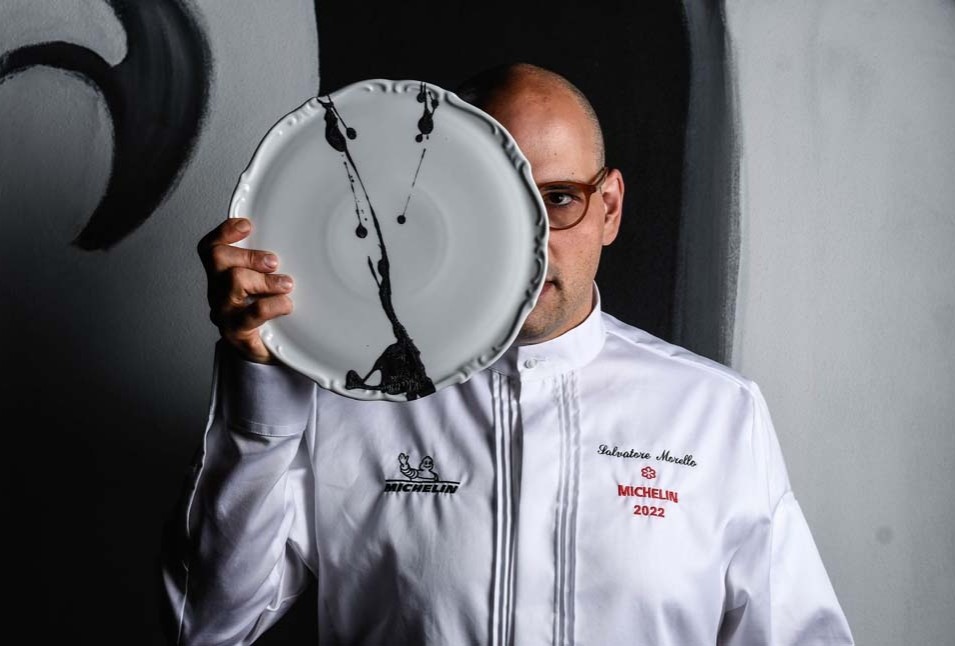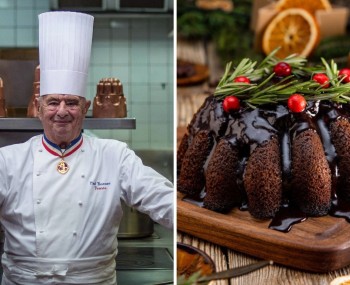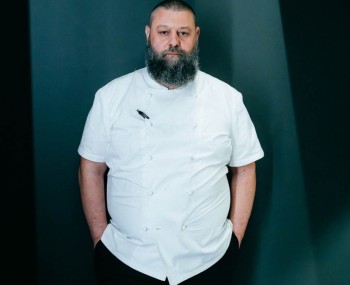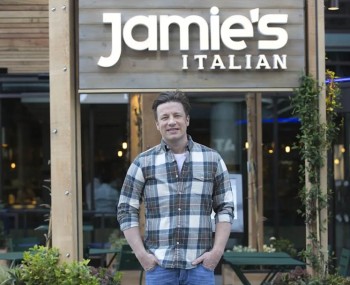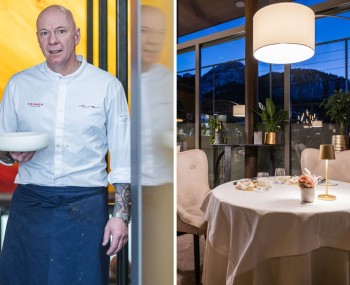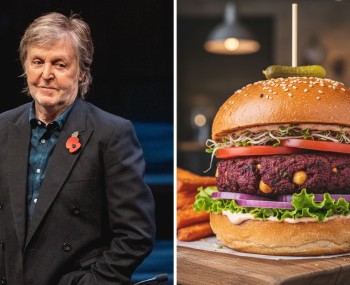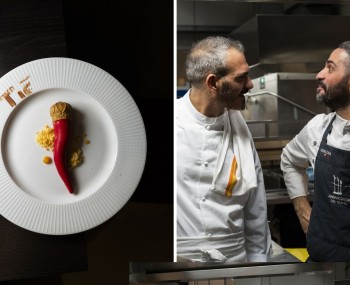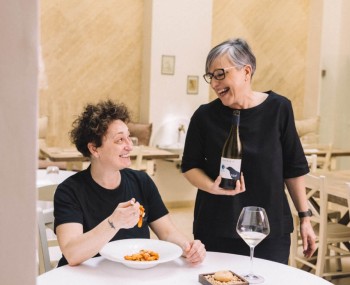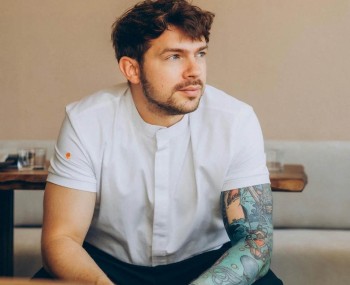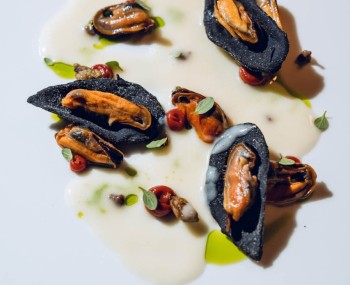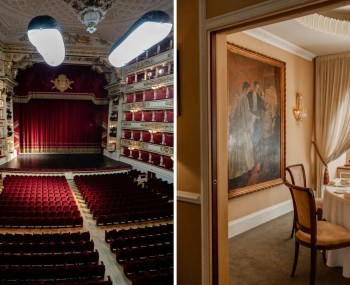At Inkiostro in Parma, Salvatore Morello brings his style into focus, with an important long stay at the highest gastronomic level in Germany, contemporary expressions, rare elegance, and exquisite originality.
Inkiostro
The restaurant
The name is "Inkiostro," and it is leaving its mark. In the tranquil Emilia region, apart from the lively Modena, the Poli family continues to stir the quiet Po Valley gastronomic scene, “splashing” them with his Inkiostro. Terry Giacomello had his part in writing a fine chapter in the history of the Italian avant-garde, but Salvatore Morello, who seemed an outsider, allows no regrets. On the contrary, he surprises with an increasingly defined proposal, of international and contemporary calibre, powerful on the palate although conceptually and geographically at the antipodes of the previous season.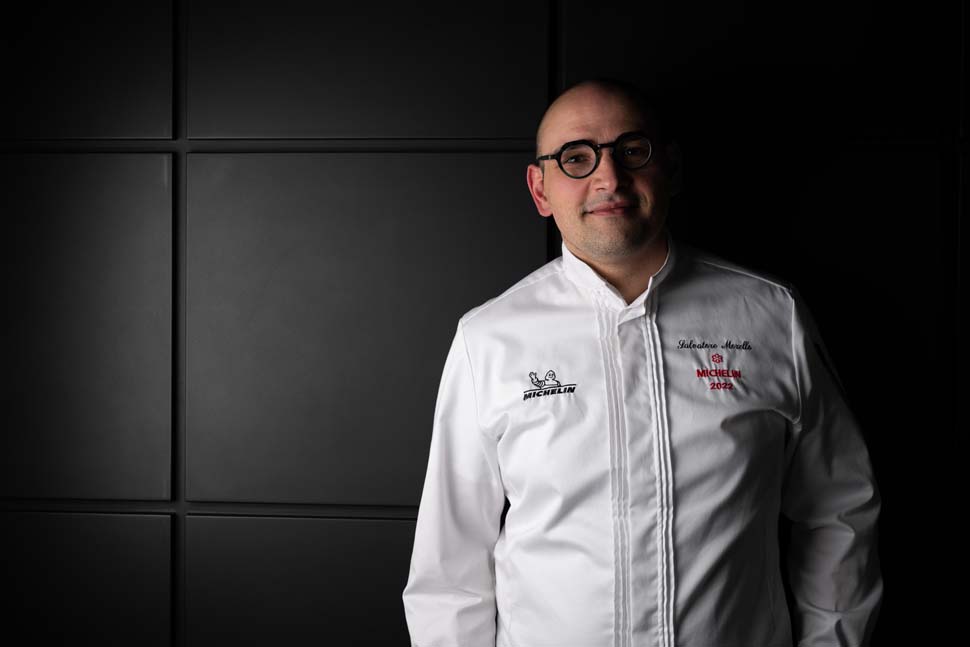
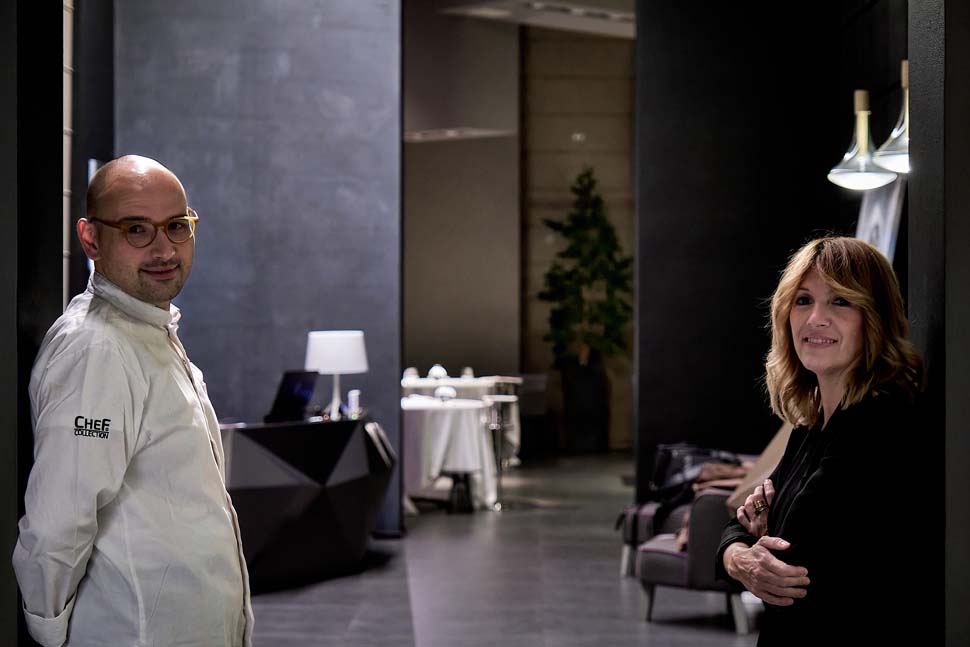
We’re not talking about a stranger: for eleven years his career advanced first in France, then in Germany, always at the highest level, already touching the MICHELIN Star as a chef. His mentor, however, is one: Joachim Wissler of the three-starred Vendôme in Cologne, at which Morello has stayed a full seven years, the last three as sous-chef. "The constant style I encountered in Germany’s starred restaurants is a strong French base, on which Asian or Northern European influences are added. And I, too, believe that cuisine should be as classical as possible, because that's what defines you as a cook and at the same time ensures understandability for the public; whereas being modern is popular, therefore by definition it passes." 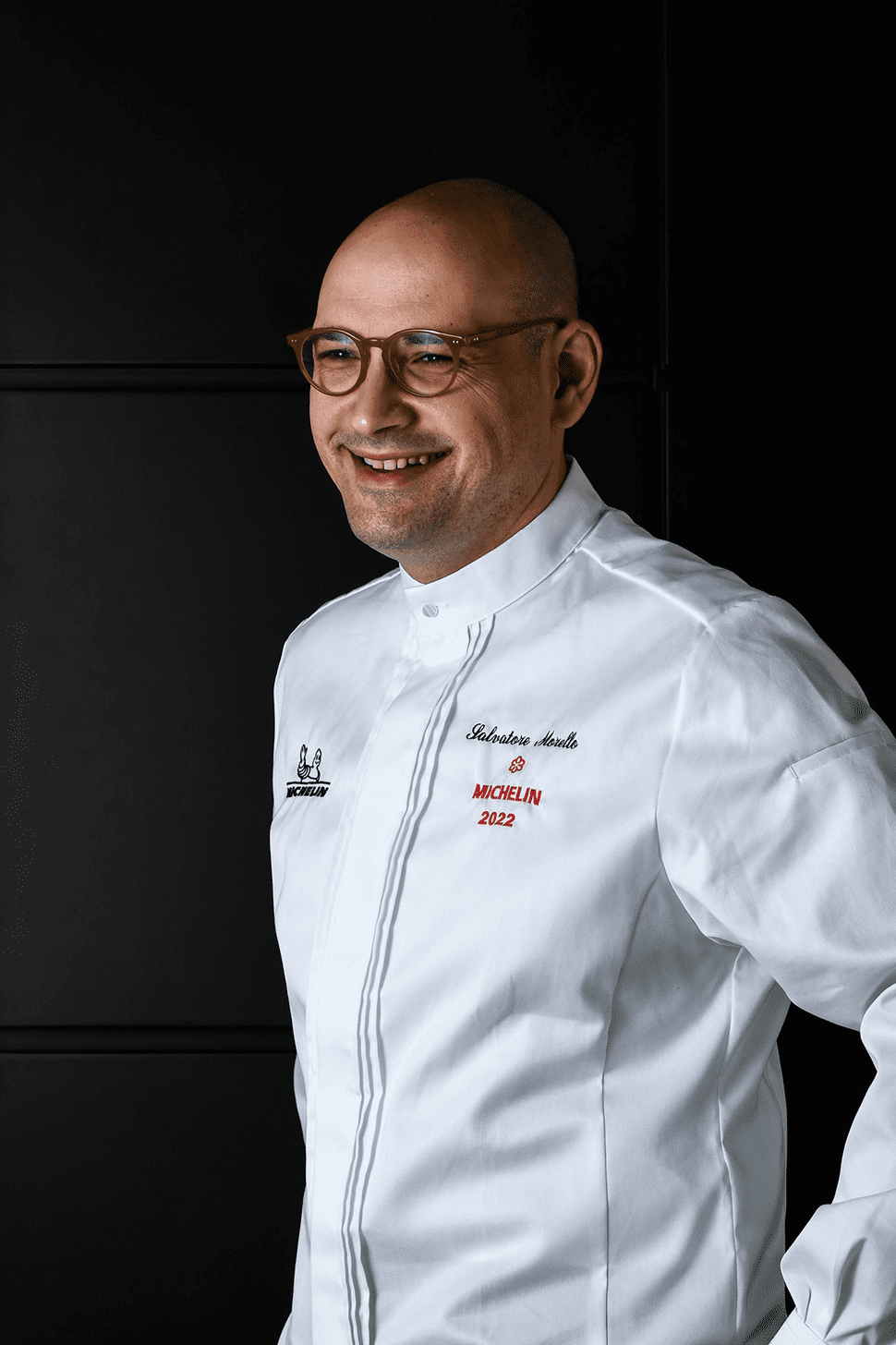
"To Wissler I owe first of all the way of thinking and understanding cuisine, then a good chef should find his own way. I could replicate all the dishes, but I never will. I can't remember a single day when I haven't learned something or been corrected. All exceptional chefs of the most diverse nationalities were involved in the creative phase of “kochthink,” where everyone had to bring his own idea."
Returning to Italy due to the covid pandemic closures, Morello had a contract ready in Germany, but preferred to accept Francesca Poli's offer and stop at Inkiostro, where over a year and a half he matured. "I arrived without a brigade, I didn't even know the suppliers. Instead, now we are in full touch with the territory, without doing territorial cooking, because all the vegetables are local. Then there are Italian traditions, especially the first courses. We have risottos, fresh and dry pastas, which however follow the concept of my cuisine, with lots of broths, seaweeds, Asian and especially Japanese ingredients, which I delved into in Christian Bau's internship. I think of fermented and fish sauces, homemade, dashi and Ocoo, which is a Vietnamese heritage. Not too much, in balance with a more classic approach."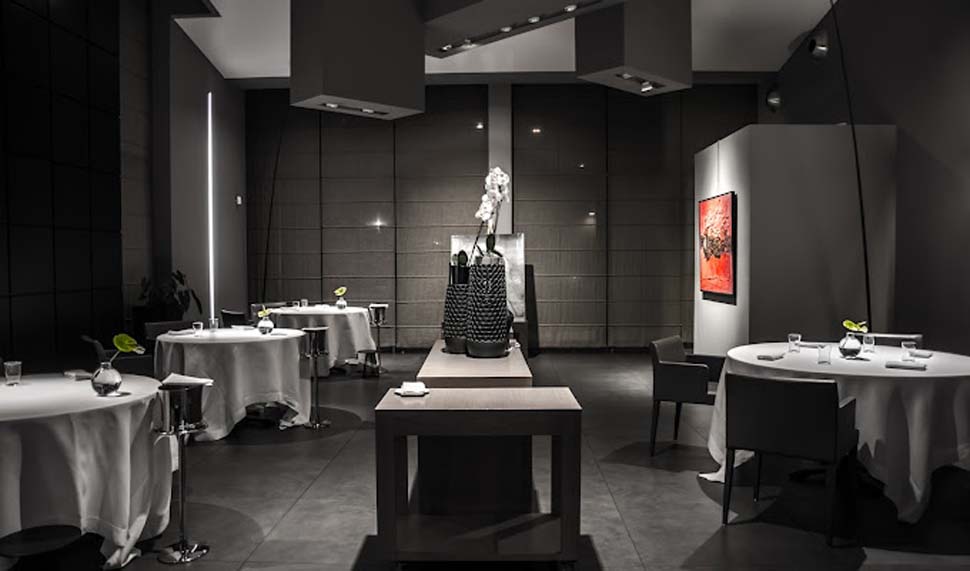
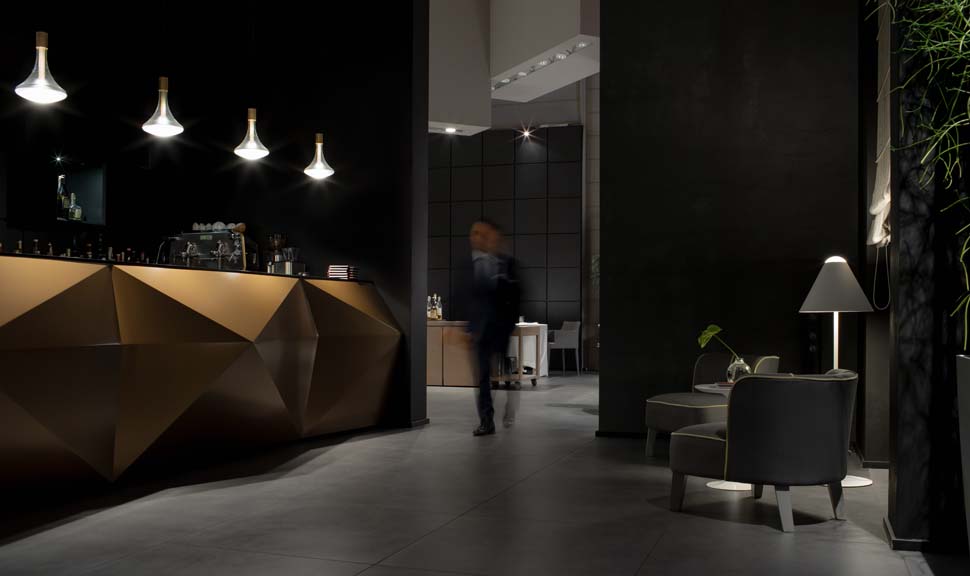
The result are extremely complex and detailed dishes, where nuances are evident but evading. The appeal is international, contemporary in tastes and textures, with an omnipresent umami flavor but balanced by elegant and original sharpness, conveyed by citrus infusions, with zest and pulp, fermentations, kombucha, and a range of thirteen homemade vinegars, all different in style. Even the calorie intake is controlled, so that lightness is not just artistic, but also on the body.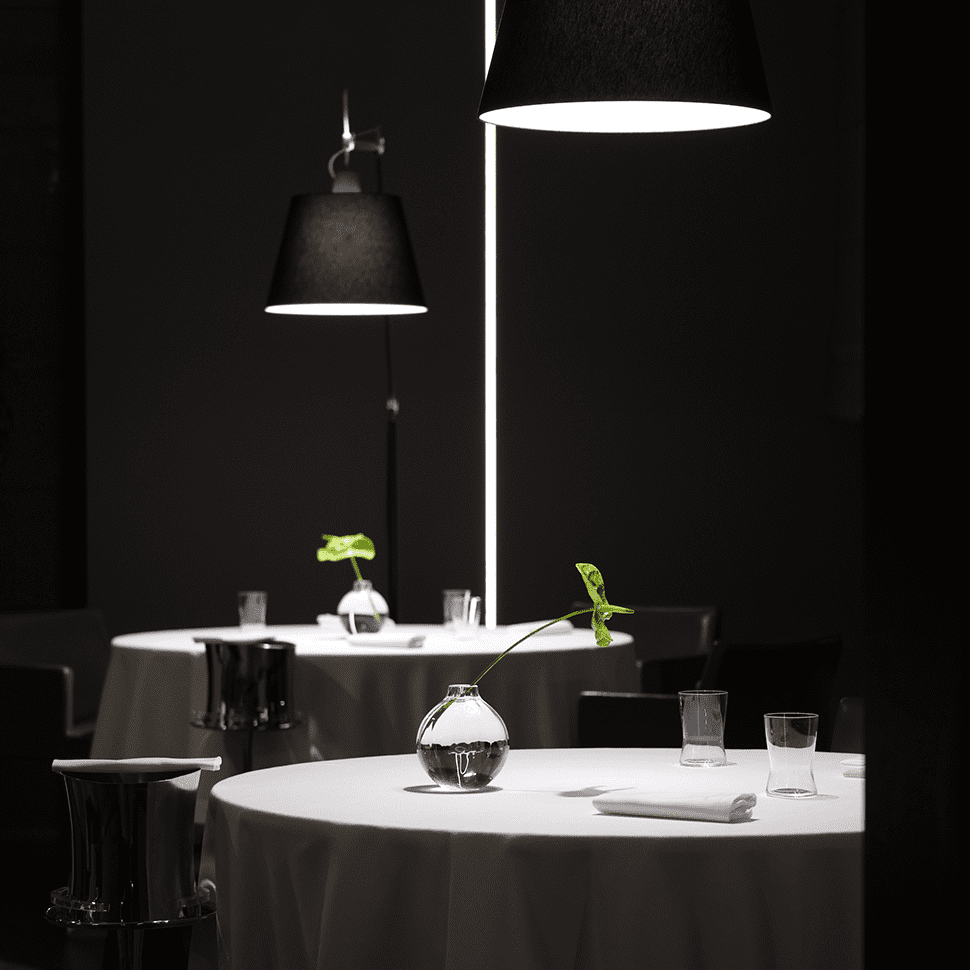
There is an à la carte menu, and there are four tasting menus: Inkiostro, with 7 and 9 course choices, a 6 courses Vegetariano menu, and Carta Bianca, with 5 courses for loyal customers, priced between 120 and 160 euros. To encourage a sustainable, vegetarian choice option for the whole table, the choice of a change of proteins was introduced, but there is no shortage of entirely vegetarian dishes on the other menus. "I often start by selecting the vegetables before choosing the protein; it is crucial. We collaborate with a local farmer and farm, to whom I’ve asked to cultivate everything that I miss from Germany, such as kohlrabi. We also have our herbs in the space behind the restaurant."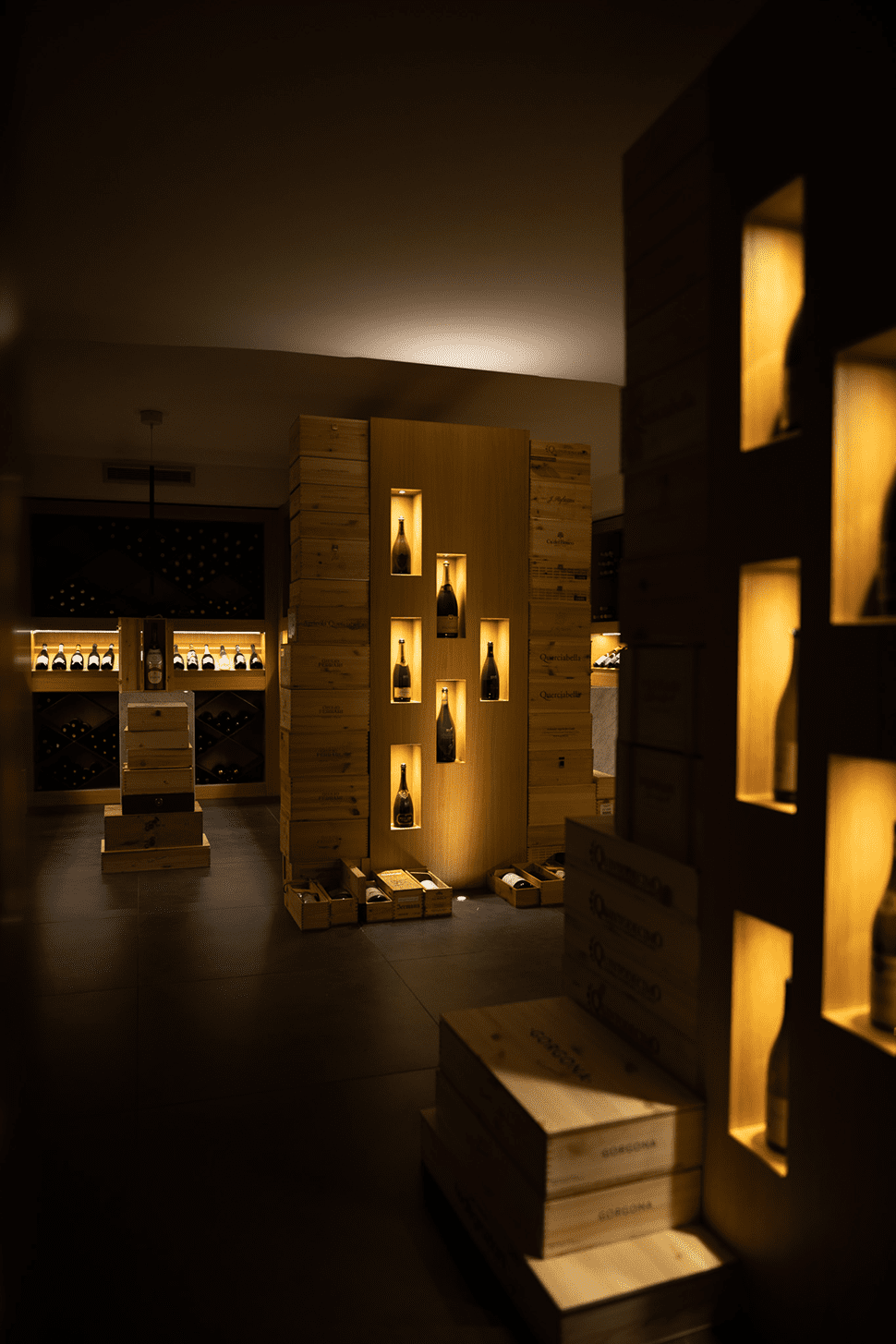
The dishes
Appetisers immediately start strong, and give a pretty good idea of what’s to come: chickpea fritter with shiitake mayonnaise, Norcia black truffle and mountain herbs; the puffed tapioca with bell pepper achiote and mint, fermented bell pepper, teriyaki and basil sauce; the oyster with tangerine granita and furikake; cone tuille with dill mousse, sour milk and mustard caviar spheres; tartlet of goat cheese and black garlic; the airbag of roots puree and tarragon; and the macaron with pickle mountain turnip juice, kombu seaweed gel, ponzu and green shiso. Crunchy, with a dialogue between sourness and umami that will give character to the meal, without being tiring. "The palate should always be caressed, with a few peaks now and then."
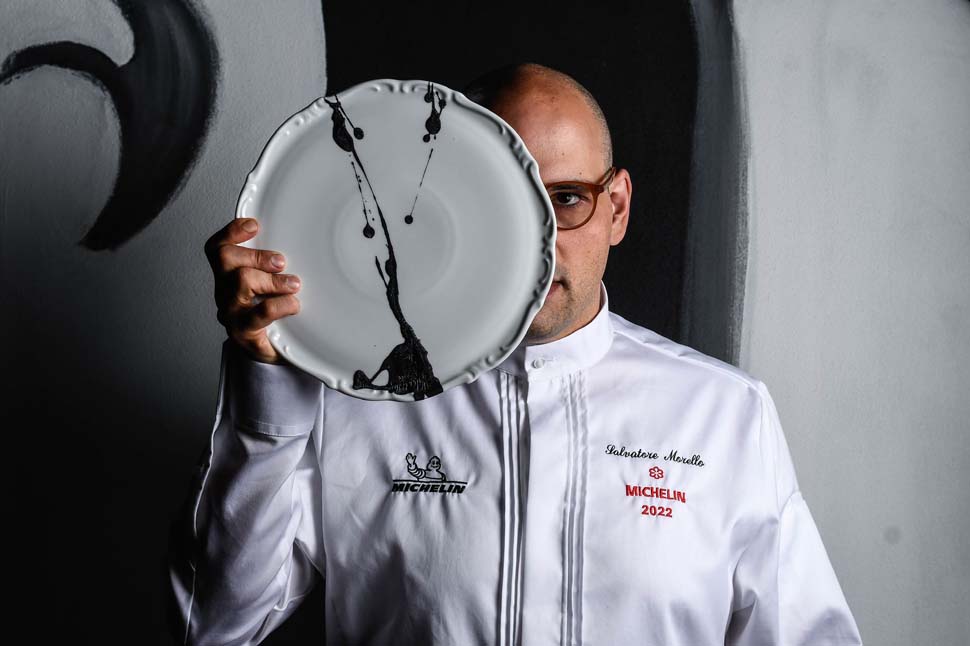
Then the double-marinated greater amberjack is truly elegant, served with spicy cucumber kimchi, fermented ginger, whey infused as a dashi, whipped with dill oil, ossetra caviar and Japanese crème fraîche, enriched by a mix of vinegars. Layers of sour and umami nuances, with spikes of herbaceous and spicy sensations, as translucent as fish flesh, Classic in its appearance, yet entirely exciting and totally gourmet.
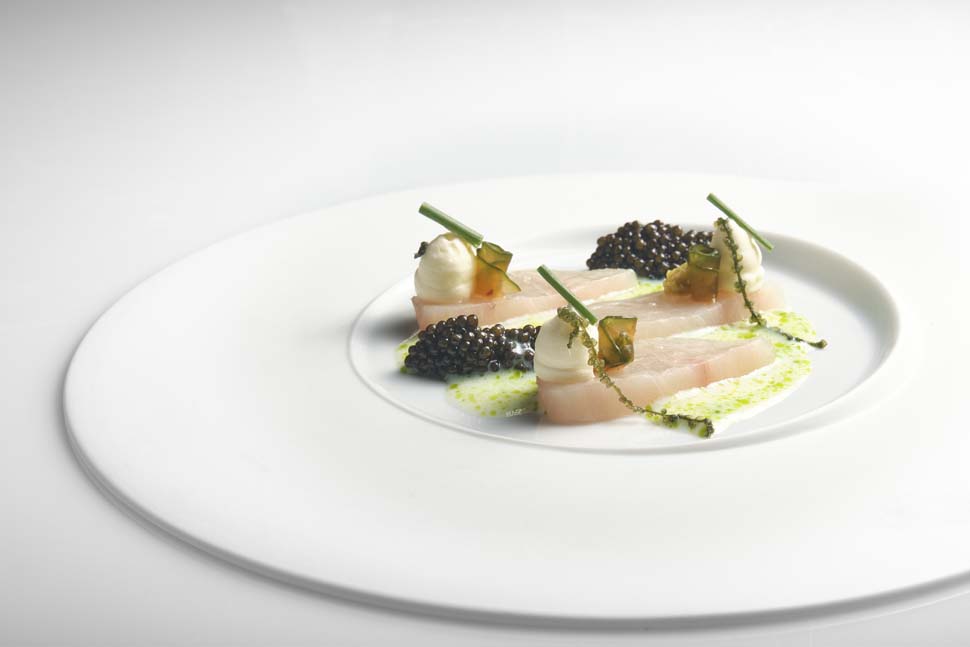
"Cauliflower is to me one of the noblest vegetables because of its defined flavor profile and potential creaminess." Morello cooks it inside the Green Egg oven, extracts the raw heart under the burnt surface and finishes it in harmony with cauliflower water. It is then pan fried and glazed with kecap manis, before garnishing with almond and lemon cream; to finish, a lightened hollandaise sauce, made with miso instead of butter.
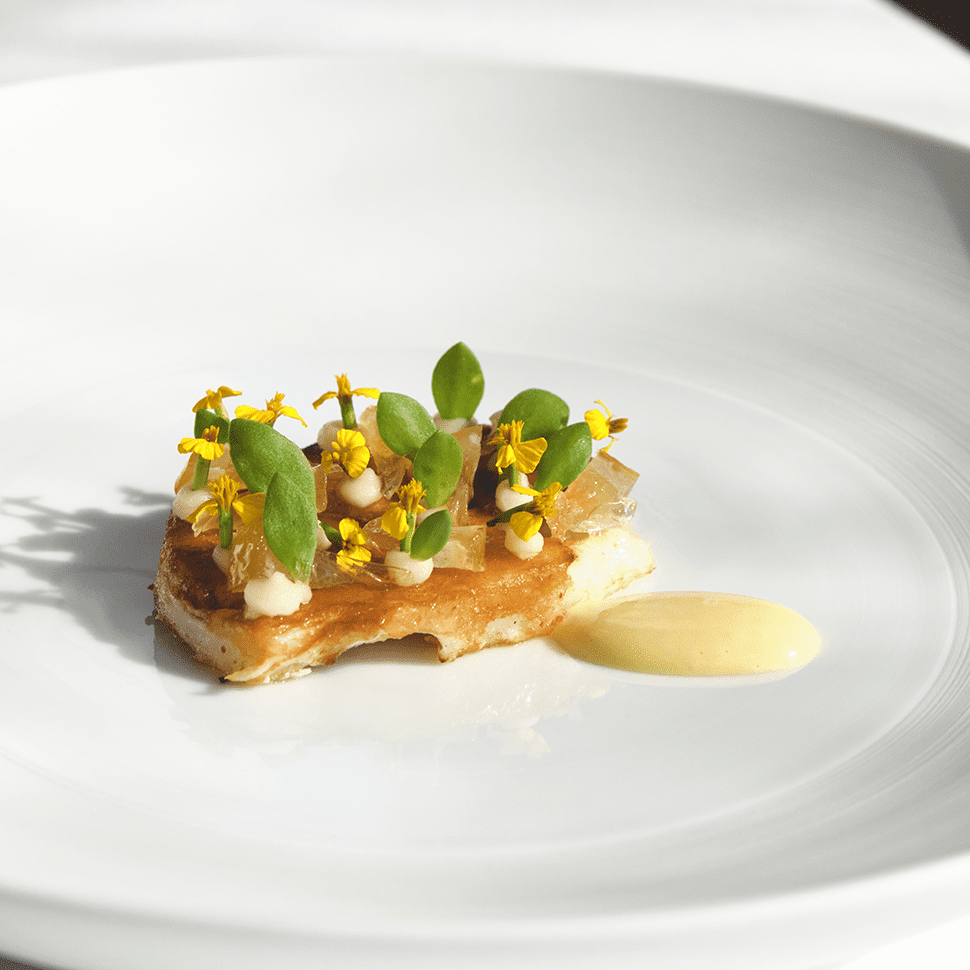
The pigeon is a highlight, served as a starter ("As a main course it would be unfashionable, on the main course I prefer a large animal better"). It is cooked classically, as are all meats and fish, whole in an iron pan with sesame oil, enhancing the nutty flavour of pine nuts, meat, and sesame. On the plate, displayed with raw fillet and black truffle for a delightful, flaked texture, small but beautiful; beetroot and foie gras mousse praline (wrapped in pine nut ash), a classic; instead of a sauce, for less invasiveness, the fatty Fourme d'Ambert cheese that melts in the mouth. "Almost a salad."
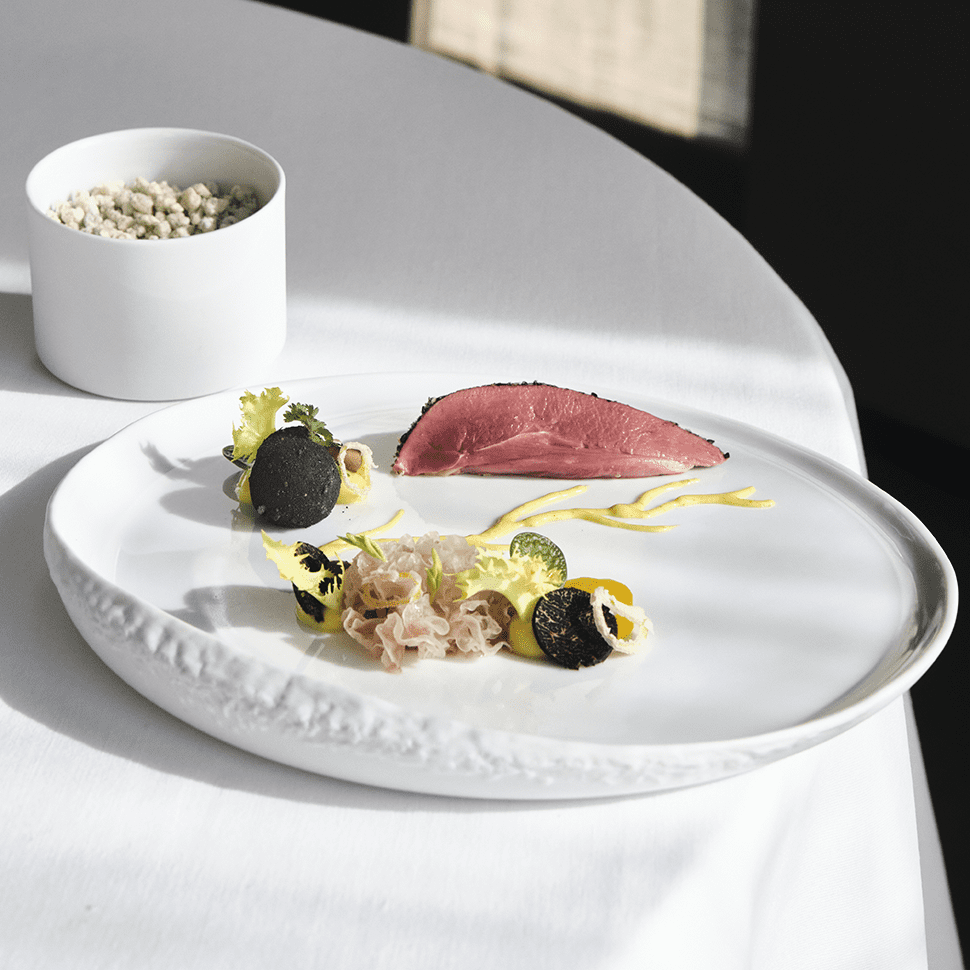
Evoking a first course, without being too heavy on the stomach, are the tortelli di erbetta, a mock pasta where kohlrabi serves as the casing, the filling is composed of wild herbs, the dressing is white sesame paste and beurre blanc with oxidized kohlrabi and onion flavored Kyoto oil. Here, you have sauces with two different textures, liquid, and firm, never invasive on the protagonist of the dish.
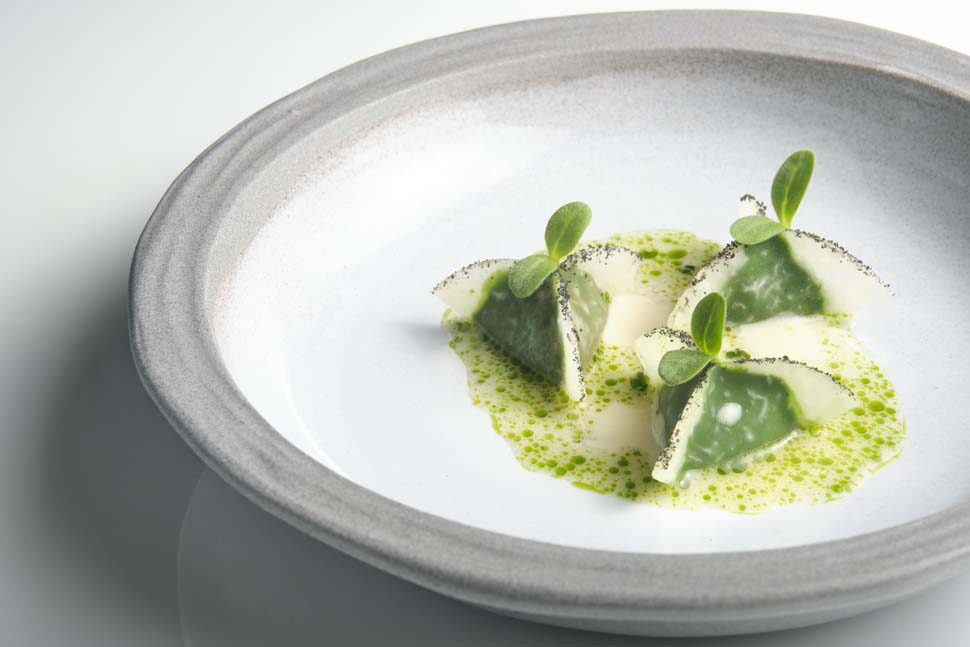
Norwegian skrei cod is cooked in the bamboo basket with kombu seaweed, to enhance the flaky texture, and served with chervil crumb for an herbaceous quality, seasonal side dishes such as romanesco cabbage and creamed Jerusalem artichoke, shrimp, salmon roe, and crones roots. Even the fish and tuber scraps end up in the sauce, infused with burnt hay.
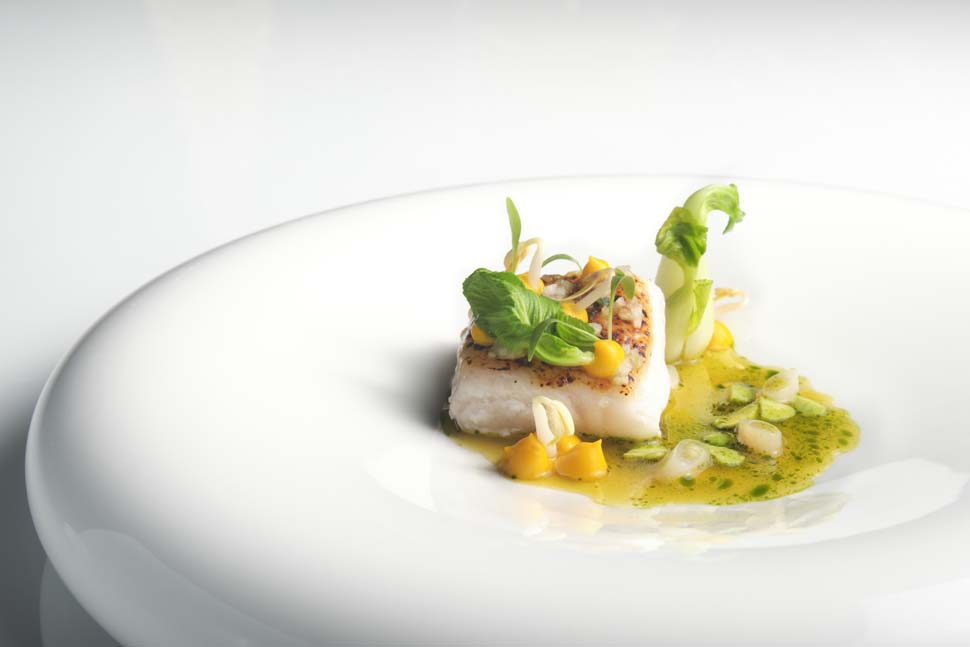
Finally, the main course, with a classic twist: venison aged in the house and carved in the dining room whenever the busy dining room allows it, served with Sauerbraten sauce, a sort of seaweed-lightened jus, Asian eggplant parmigiana with shiro miso, onion to recall the territory, eggplant caponata, classically Sicilian, with Balsamic Vinegar, wild cabbage puree and onion soup. Sommelier Daniele Molinaro playfully pairs it with a 2019 Red Karas, a blend of Areni and Khndoghni grapes from the slopes of Mount Ararat in Armenia, fresh and complex, full-bodied but not tannic, with powerful red fruit aroma.
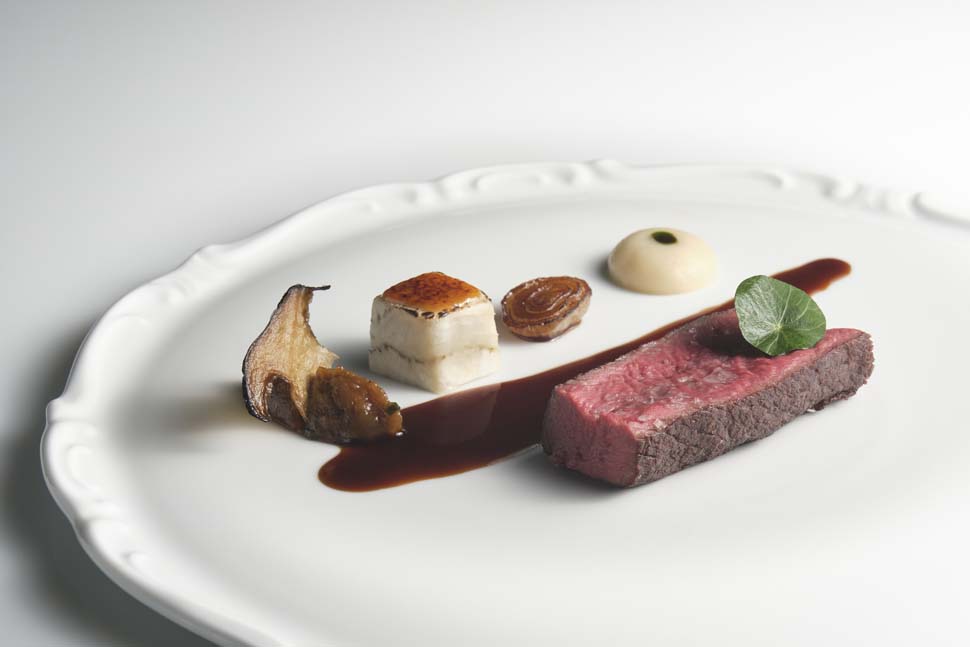
The pre dessert is “cuvée” of Paduan pumpkin varieties, expertly blended. On top of pumpkin seed cream rest spaghetti squash smoked in the Green Egg oven and sautéed in coconut, molasses bread crumble, and curried pumpkin ice cream glazed with fennel gel.
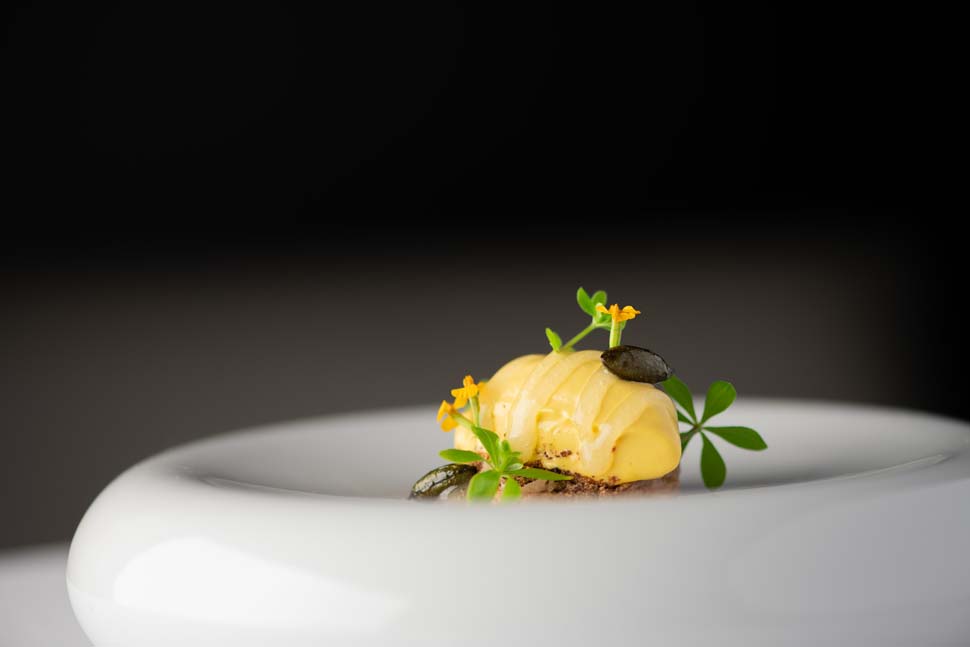
Closing the meal, the timeless chocolate-red fruit pairing, specifically French blackcurrant mousse with fermented red shiso leaf sauce and homemade umeshu liqueur. To drink, a Moscato di Scanzo Pagnoncelli 2017, only 3,360 bottles produced, an intense and elegant wine with hints of currants and roses, light notes of tobacco and jam, pleasantly tart at the finish.
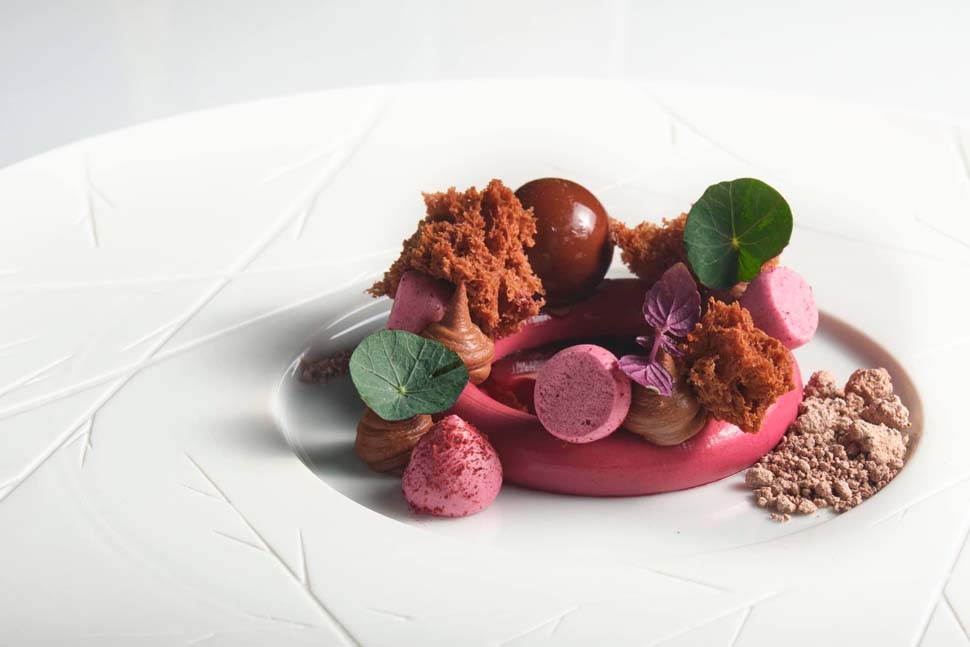
Address
Inkiostro
Via S. Leonardo, 124, 43123 Parma PR
Tel: 0521 776047
Website
